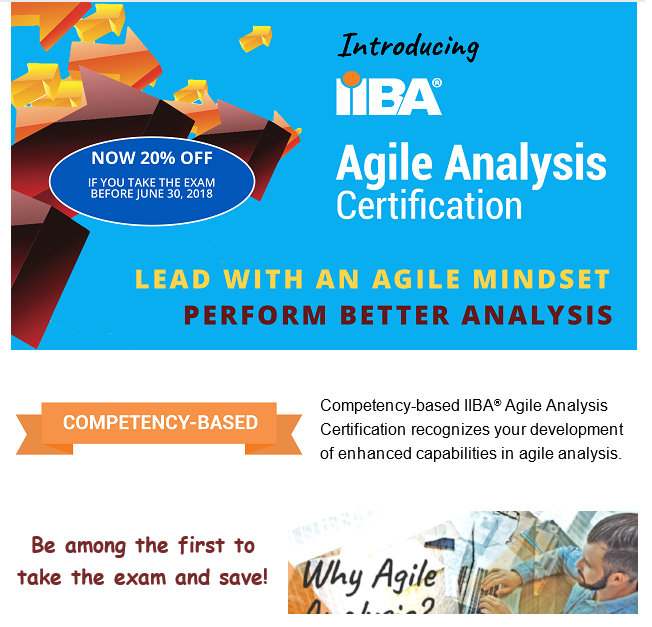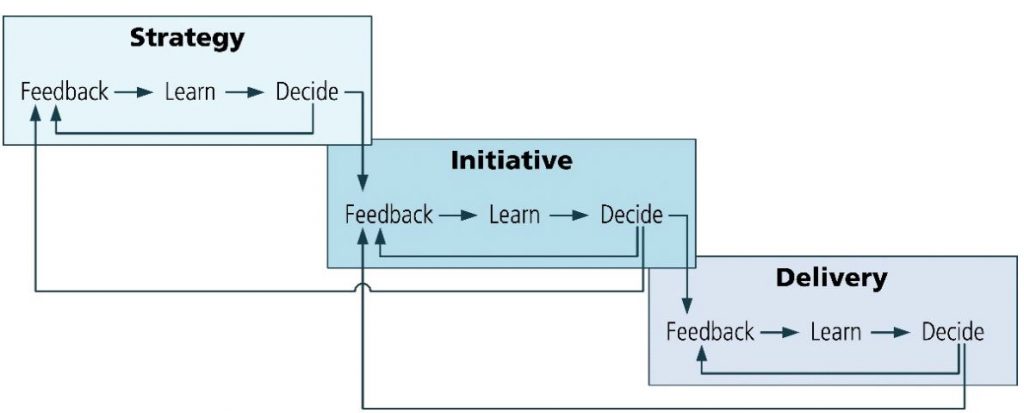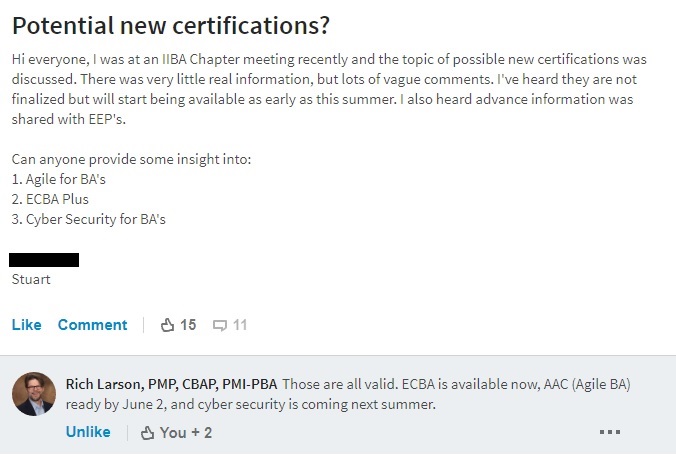The rumors are true. The IIBA has a new certification.
I first heard about the new certification on a LinkedIn BA group, from a comment by Richard Larsen.
For context, Richard Larsen is the author of many CBAP/CCBA exam guides, through Watermark Learning. For anyone who has prepared, or is thinking about taking the exam, you would have undoubtedly come across his work.
Quoting Rich:
The IIBA confirmed the good news to members, in an e-mail sent 2 June 2018. We have a new certification.

Now we have a new certification, what does this mean?
Breaking it down.
From a quick read through the Agile Analysis Certification eBoook (only for IIBA Members), it calls out the following key elements:
- It’s based on the BABoK Agile extensions.
- The IIBA developed the certification with the Agile Alliance. A smart move to ensure alignment with the Agile extensions and key agile principles.
- The assessment will evaluate what Agile leaders expect you (as a BA) to perform.
- They are grouped into four domains guide:
- Agile Mindset;
- Strategy Horizon;
- Initiative Horizon, and;
- Delivery Horizon.
An Agile mindset implies you need to think in an agile way. However, you don’t teach Agile from just reading a book. Instead, the mindset develops over time and by applying Agile principles. So, if you’re hoping for a quick-implant Agile mindset, you’ve come to the wrong place.
This inference is a good sign; if you want to be successful at Agile, you need first to get your mindset right and prepare yourself to be agile. Each problem will present with its unique challenges, so a good BA will apply tools/techniques in a unique way to get the desired outcome.

Strategy Horizon helps to identify what the business wants to achieve (goals) and define how the business can broadly achieve the goal. It will help to shape capability, but won’t go into detail.
Initiative horizon helps to shape ideas into solutions. It identifies what features are required, relative priority, and expected life.
The delivery horizon guides and informs analysis activities at the delivery level.
As depicted, each horizon links with each other, implying the BA needs to keep their agile mindset when working across all three levels. It’s a clear sign of being a “pure” business, or technical BA is not enough if you want to work in an agile context.
Agile BA certification?
There is a lot of questions I have about the new certification. Probably too many for a blog post, so I’ve trimmed them down.
Why now? What is the strategy on adding another certification to the mix? Is this addressing a gap in the market? Or is it to grow the certifications and education industry? I think it’s a it’s a bit of both, but more to fill a gap.
Context. Will the new certification complement or compete with existing agile certifications? The only Agile BA certification is AgileBA from APMG, so it looks like the IIBA will develop the certification to complement their own BA certification.
The AgileBA aligns with DSDM, which can limit its use in a Scrum or SAFe organisation. So, it seems the IIBA is well positions to add value.
I think the IIBA can (and should) ensure the certification can work in different frameworks and methodologies. Given the structure of both BABoK and the Agile extensions and the lack of Agile BA certifications, I think this will occur.
Bridge the gaps. Will the new certification help to address gaps in agile methodologies? I sure hope so.

One of the biggest gripes I have is the lack of kudos for the BA in a modern Agile framework, so I want to know if the new certification will help to address gaps in Agile frameworks/methodologies.
Do we need the certification? Probably?
Will the certification help me get a job? Perhaps, but it depends. Like all certification, it shows that you are proficient in a chosen field. However, I would always look for a mix of certifications and real-life experience when I recruit
Looking to the future
Just in case you hadn’t noticed, or been cut off from civilisation for a few years, Agile practices will become, if not already, the default mode of delivery across the IT industry in the next few years.
My belief is the Agile BA certification is attempting to define the role of BA in the modern agile delivery world.
It’s fair to note that most agile methods/frameworks talk about the skills required, instead of roles. It’s quite a deliberate language; Agile teams by nature must be nimble and will require multiple skills to complete tasks. They don’t need “roles” as a scrum team member can fulfil different tasks as required. For example, a developer can perform analysis work, a tester can fix a bug, and a BA can perform user testing.
But, the Agile world does not treat all skills as equals.
One thing that’s always stuck in my craw is the baffling absence of BAs in the SAFe reference model. Despite other specialist roles called out (developer, tester, architect), BAs haven’t earned a spot in the model. There is no formal recognition of the BA role, despite the reality that BA skills are important in a cadence-based delivery model. Can this certification help influence the need to add the BA skillset formally to the SAFe model? Maybe.

More likely, the need for a BA, or just BA skills, gets lost in translation.
Sure, it may not be defined as a role, but the skills of a BA are core in an Agile team. The need for skills depends on individual circumstance, so in rare cases, the skills of a BA may not be required. But, it is rare.
So now, we wait and see what the certification will become.

